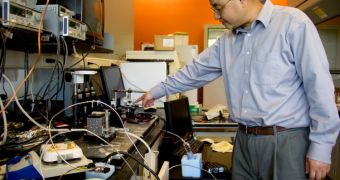University of Michigan (U-M) investigators say that they are currently developing improved, portable gas sensors. The devices will be used to sniff out markers indicating the presence of explosives, diagnose diseases by analyzing breath, and detect accumulations of dangerous chemicals.
Such sensors have been around for quite some time, but the U-M team is developing a very advanced version of the technology. Researchers here say that their devices will even provide an extended battery life, which will come in very handy when the sensors are used in remote locations.
The instruments could be installed inside mines, for example, where they could keep an eye on how much methane accumulates following usual operations. The sensors could sound an alarm in case chemical concentrations in the shafts become too high.
Gas-analysis devices work by identifying and measuring airborne chemicals, some of which are only produced by specific compounds. This makes it easy to fine-tune the instruments to detect certain explosives, infectious agents and medical biomarkers for specific conditions.
The problem facing researchers is that it's very difficult to tell chemicals in a vapor mixture apart from each other, says U-M Department of Biomedical Engineering, Xudong Fan. His team is developing the improved technology together with experts at the University of Missouri in Columbia.
Details of the device were published in a paper entitled “Adaptive two-dimensional micro-gas chromatography,” which appears in the May 1 issue of the esteemed journal Analytical Chemistry.
Funds for the investigation were provided by the US National Science Foundation (NSF) and the U-M Center for Wireless Integrated Microsensing and Systems. The new sensors “can save a lot of power, so our system can be used in remote areas,” graduate student Jing Liu explains.
At this point, the U-M devices are outfitted with special, decision-maker sensors, which can detect gases containing up to 20 different chemicals. What sets these sensors apart from all others is the fact that they can direct the gas sample towards one of two detector tubes within the instruments.
This is very important if you want to develop measuring devices capable of identifying multiple gases and chemicals with great precision. In the near future, the team plans to improve its technology even further, but that will take some time.

 14 DAY TRIAL //
14 DAY TRIAL //